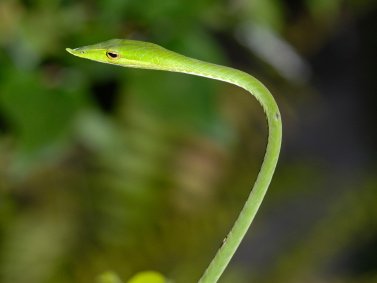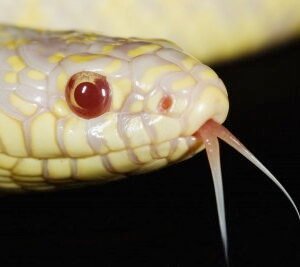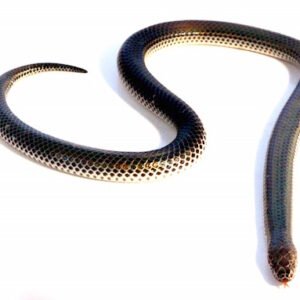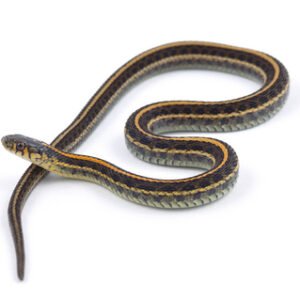Physical Characteristics and Habitat
The Asian Vine Snake, belonging to the genus Ahaetulla, is renowned for its remarkable physical characteristics that aid in its survival. This serpent is distinguished by its elongated, slender body that can reach lengths of up to two meters. The vibrant coloration of the Asian Vine Snake typically includes shades of green, yellow, and black, which serves as an exceptional natural camouflage. This striking coloration enables it to blend seamlessly into its surroundings, mimicking the appearance of vines and branches within its habitat. This adaptation is crucial for both hunting and evasion from potential predators.
In terms of habitat, the Asian Vine Snake primarily thrives in the dense rainforests and lush environments of Southeast Asia, including countries such as Malaysia, Indonesia, and Thailand. These habitats provide the ideal conditions necessary for the snake’s arboreal lifestyle. The ability to dwell in trees is facilitated by its slender body, which allows it to navigate between branches with agility and precision. The snake often positions itself on branches, waiting to ambush its prey, which mainly consists of small lizards and frogs.
Another significant adaptation of the Asian Vine Snake is its exceptional vision. Equipped with large eyes, these reptiles possess keen eyesight that aids in detecting movement from a distance. This ability is not only instrumental in hunting but also crucial for recognizing threats from predators in the surrounding environment. The blend of physical traits and specialized adaptations makes the Asian Vine Snake a fascinating example of nature’s ingenuity, showcasing how specific characteristics can enhance survival in a complex ecosystem.
Behavior and Diet
The Asian vine snake, renowned for its remarkable camouflage, exhibits fascinating behaviors that reflect its predatory lifestyle and adaptations to its environment. This snake is predominantly arboreal, often found resting on branches where its long, slender body blends seamlessly with the surrounding foliage. The snake’s movement is characterized by a slow, undulating motion, which allows it to remain unnoticeable to both prey and potential predators.
A primary aspect of the Asian vine snake’s behavior is its hunting technique. This species primarily preys on small lizards and frogs, leveraging its exceptional speed and agility to capture meals effectively. The snake uses its keen eyesight to detect movement within its environment, often hanging motionless until an unsuspecting lizard or frog draws near. Once the moment is right, the Asian vine snake strikes with remarkable rapidity, employing a combination of precise coordination and swift reflexes. This hunting method underscores the snake’s status as a skilled predator within its ecosystem.
In addition to hunting, the Asian vine snake demonstrates intriguing social behavior. Typically solitary creatures, these snakes exhibit territoriality, especially during mating seasons. However, they can sometimes be found in small groups in areas abundant with food resources. Their ability to remain still, camouflaged in their green surroundings, serves as a defensive mechanism against potential threats, allowing them to avoid encounters with larger predators.
The role of the Asian vine snake in its ecosystem is crucial, particularly in regulating the populations of the small lizards and frogs that comprise its diet. As a predator, it helps maintain a balance within its environment, fostering biodiversity. The unique adaptations and behaviors of the Asian vine snake not only showcase its incredible evolutionary journey but also highlight the importance of preserving their natural habitats for ecological stability.





